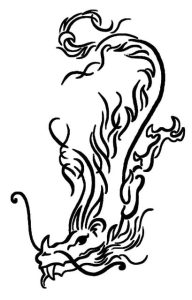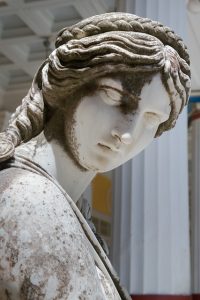perfume myths
Perfume Myths: Debunking the Scented Stories
Introduction
Welcome to an exploration of the intriguing world of perfume myths—a topic that delves into the often-misunderstood realm of fragrances, their production, and cultural significance. This article aims to unravel the complexities surrounding various misconceptions and provide a comprehensive understanding of this captivating industry. As we embark on this scent-filled journey, readers will gain insights into how perfume myths have evolved, influenced global trends, and shaped economic landscapes. By the end, you’ll be equipped with knowledge to discern fact from fiction in the realm of perfumery.
Understanding Perfume Myths: A Definition and Historical Perspective
Definition: Perfume myths refer to a collection of prevalent beliefs, stories, and misconceptions surrounding perfumes, essential oils, and aromatics. These myths encompass various aspects, including the origins of fragrances, their medicinal properties, cultural symbolism, and historical significance. Often passed down through generations or popularized by media and pop culture, these tales shape public perception and influence the way people interact with scents.
Core Components:
-
Historical Narratives: Many perfume myths are rooted in ancient texts, folklore, and traditional practices. These stories often attribute mystical powers or healing abilities to certain aromas, such as the belief that incense can purify spaces or ward off evil spirits.
-
Cultural Symbolism: Different cultures assign unique meanings to scents. For example, lavender is revered for its calming properties in Western traditions, while in some Eastern cultures, it symbolizes death and is used primarily for funeral ceremonies. Understanding these cultural associations is crucial when interpreting perfume myths.
-
Medicinal Attributes: Throughout history, various essential oils have been prized for their purported healing abilities. Ancient civilizations like Egypt and China utilized aromatics for medicinal purposes, leading to myths about the curative powers of scents like rosemary or frankincense.
Historical Context: The concept of perfume myths is not new but has evolved over millennia. From ancient Egyptians’ use of incense in religious rituals to the medieval European belief in the power of amulets and potions, scents have always held a special place in human society. With the rise of modern perfumery in the 19th century, these myths took on new forms, often blending scientific knowledge with traditional practices.
Global Impact and Trends: A World of Scented Stories
The influence of perfume myths transcends geographical boundaries, shaping global trends and cultural appreciation for fragrances. Here’s a glimpse into how these myths play out across different regions:
| Region | Perceptions and Trends | Examples |
|---|---|---|
| Europe | Historical emphasis on medicinal uses and luxury. Iconic scents often tied to royal families and aristocratic status. | The popularity of French perfumes in the 19th century, such as J’Adore from Chanel, reflecting elegance and sophistication. |
| Asia | Deep-rooted cultural significance, with many traditions revolving around scent. Often associated with spirituality and auspicious occasions. | In Japan, the tradition of using incense (kōdō) during tea ceremonies highlights the cultural appreciation for aroma. Chinese New Year celebrations feature the burning of joss sticks for good fortune. |
| Middle East | Rich heritage in aromatic oils and spices. Perfumery considered an art form, with intricate blends passed down through generations. | Oud, a resinous wood oil, holds immense value in the Middle East, often used in traditional ceremonies and considered a symbol of wealth. |
| North America | Modern approach, focusing on individual expression and marketing trends. Fragrances often aligned with celebrity culture and pop aesthetics. | The success of fragrance lines by celebrities like Justin Bieber or Kim Kardashian, capitalizing on personal brands and social media influence. |
These diverse perspectives demonstrate how perfume myths adapt to cultural norms, creating a rich tapestry of scent-related traditions worldwide.
Economic Considerations: The Business of Perfumery
The economic landscape of the perfume industry is complex, influenced by various factors, including market dynamics, consumer trends, and regulatory environments.
Market Dynamics:
- Global Market Size: According to a 2022 report, the global fragrance market size was valued at USD 43.5 billion in 2021 and is projected to grow at a CAGR of 6.5% from 2022 to 2030. This growth can be attributed to rising disposable incomes and a growing preference for premium and luxury fragrances.
- Regional Disparities: The Asia-Pacific region dominates the market, with China and India emerging as significant players. In contrast, Western Europe and North America exhibit mature markets characterized by well-established brands.
Investment Patterns:
- Luxury Brands: High-end perfume houses often invest heavily in marketing and brand image, positioning their fragrances as luxury items. These brands focus on exclusivity and heritage, appealing to a niche market willing to pay premium prices.
- Mass Market Appeal: More affordable fragrance lines target a broader consumer base, emphasizing trends and celebrity endorsements. This segment leverages strategic pricing and extensive distribution networks.
Role in Economic Systems:
- Job Creation: The perfumery industry contributes significantly to employment, from farmers cultivating aromatic ingredients to chemists creating complex blends and marketers promoting brands globally.
- Tourism Impact: Iconic perfume houses and fragrance destinations, such as Paris or the French Riviera, attract tourists interested in learning about perfumery and experiencing scent-centric activities.
Technological Advancements: Revolutionizing Scents
Technological innovations have played a pivotal role in shaping the perfume industry, transforming production methods, ingredient sourcing, and consumer experiences.
In-Depth Production Techniques:
- Extraction Methods: Modern perfumery employs advanced extraction techniques like solvent extraction and CO2 extraction to obtain high-quality essential oils from various plant materials. These methods ensure purity and preserve the delicate aromas.
- Synthetic Compounds: Synthetic aromatics allow perfumers to create unique scents not found in nature, expanding the creative possibilities for fragrance composition.
Ingredient Sourcing and Sustainability:
- Ethical Harvesting: With growing awareness of environmental concerns, many perfume companies are adopting sustainable practices, ensuring ethical sourcing of ingredients like essential oils from organic farms.
- Lab-Grown Ingredients: Technological advancements in synthetic biology offer the potential for lab-grown aromatic compounds, addressing concerns about overharvesting and preserving biodiversity.
Consumer Engagement:
- Digital Perfumeries: Online platforms provide virtual perfume sampling, allowing customers to explore fragrances from the comfort of their homes. Augmented reality (AR) technology brings scents to life, enhancing the online shopping experience.
- Personalized Fragrances: Customization is a growing trend, with consumers able to design unique perfumes tailored to their preferences. This personalized approach caters to individual expressions and creates a deeper connection with fragrances.
Policy and Regulation: Navigating the Legal Scented Labyrinth
The perfume industry operates within a framework of regulations designed to protect consumers, preserve cultural heritage, and ensure fair trade practices.
International Regulations:
- Fragrance Labeling: Many countries have standardized labeling requirements for fragrances, including listing ingredients and providing information on potential allergens. The EU’s cosmetic regulation (Regulation (EC) No 1223/2009) sets stringent rules for the industry.
- Intellectual Property Rights: Patents and trademarks protect unique fragrance compositions and brand identities, fostering innovation while ensuring consumer protection.
Cultural Heritage and Authenticity:
- Preserving Traditional Knowledge: Several countries have implemented measures to safeguard traditional perfumery practices and cultural heritage. For instance, France’s “Appellation d’Origine Contrôlée” (AOC) system protects and promotes regional perfumery traditions.
- Countering Counterfeiting: The illegal trade in counterfeit fragrances poses significant challenges. Strict enforcement of intellectual property laws and improved security features on packaging help combat this issue.
Safety Standards:
- Ingredient Safety: Regulatory bodies thoroughly evaluate the safety of fragrance ingredients, ensuring they meet strict standards. The US Food and Drug Administration (FDA) and the European Chemicals Agency (ECHA) play pivotal roles in this aspect.
- Product Testing: Rigorous testing protocols ensure that finished fragrances meet quality and safety standards, protecting consumers from potential hazards.
Challenges and Criticisms: Overcoming the Barriers to Perfumery
Despite its allure and historical significance, the perfume industry faces several challenges and criticisms that require thoughtful strategies for resolution.
Main Challenges:
-
Environmental Concerns: The impact of aromatic ingredient sourcing on ecosystems, particularly in the case of overharvesting, has sparked criticism. Environmentalists advocate for sustainable practices and lab-grown alternatives.
-
Cultural Appropriation: Accusations of cultural appropriation have arisen when traditional perfumery practices or scents are adopted without respect for their cultural origin. This issue highlights the importance of cultural sensitivity and preservation.
-
Health and Allergies: While fragrances themselves are generally considered safe, some individuals may experience sensitivities or allergies to specific ingredients. Ensuring proper labeling and ingredient transparency is crucial.
Proposed Solutions:
- Sustainable Sourcing: Implementing ethical harvesting practices, supporting organic farming, and exploring lab-grown alternatives can mitigate environmental concerns while preserving cultural heritage.
- Cultural Sensitivity and Collaboration: Perfumery companies should foster partnerships with local communities, seek inspiration from traditional practices, and ensure that cultural elements are used responsibly.
- Allergy Awareness: Transparent ingredient lists and comprehensive product testing can help consumers make informed choices and manage allergies effectively.
Case Studies: Success Stories and Lessons Learned
Let’s explore a few case studies to gain insights into the practical application of perfume myths and their impact on the industry.
Case Study 1: Chanel No. 5 and Iconic Fragrance Marketing
The Story: Chanel’s iconic fragrance, Chanel No. 5, launched in 1921, became a symbol of femininity and luxury. The scent was based on a complex blend of floral and citrus notes, with a unique twist of aldehydes, creating an entirely new aroma category.
Impact and Lessons:
- Marketing Genius: Chanel’s advertising campaigns, featuring iconic models like Marilyn Monroe, transformed No. 5 into a cultural phenomenon. This strategy demonstrated the power of storytelling and celebrity endorsements in shaping perfume myths.
- Defining Luxury: The brand’s success established Chanel No. 5 as a symbol of high-end perfumery, influencing luxury fragrance marketing worldwide.
Case Study 2: The Rise of Natural Perfumery
Background: In recent years, there has been a growing demand for natural and organic perfumes, driven by consumer awareness of ingredient sources and environmental concerns.
Success and Insights:
- Brand Innovation: Numerous startups have emerged offering natural perfumery lines, appealing to health-conscious consumers. These brands emphasize transparency, using ethically sourced ingredients and sustainable practices.
- Consumer Education: The rise of natural perfumes has educated consumers about the potential risks associated with synthetic fragrances, fostering a more informed market.
Case Study 3: Cultural Collaboration in Perfumery
Initiative: A leading perfume house collaborated with a renowned local perfumer from a traditional fragrance-rich region to create an exclusive collection inspired by indigenous aromas.
Outcomes and Learning:
- Preserving Heritage: This collaboration not only resulted in unique fragrances but also contributed to the preservation of local perfumery traditions, ensuring their continuity for future generations.
- Cultural Exchange: The partnership demonstrated the value of cultural exchange in perfumery, leading to innovative scent profiles that bridged traditional and modern aesthetics.
Future Prospects: A Scented Roadmap Ahead
As we peer into the future, several trends and developments hint at the direction of the perfume industry.
Emerging Trends:
- Sustainability and Ethical Practices: The demand for sustainable and ethically sourced fragrances will continue to grow, shaping the industry’s focus on environmentally friendly practices.
- Personalization and Customization: Personalized perfumes will remain a trend, allowing consumers to express their individuality through scent profiles tailored to their preferences.
- Digital Engagement: Virtual perfume experiences and augmented reality technologies will further enhance online shopping, providing immersive ways to discover fragrances.
Strategic Considerations:
- Regional Collaboration: Perfumery companies can explore partnerships with local artisans and experts in diverse regions, leveraging traditional knowledge and creating unique scent profiles.
- Cultural Sensitivity: Respectful engagement with different cultures is essential, ensuring that perfume myths are celebrated while preserving cultural integrity.
- Innovation in Ingredients: Exploring new ingredients, from sustainable sources to synthetic alternatives, will drive innovation, cater to changing consumer preferences, and address environmental concerns.
Conclusion: Weaving the Threads of Perfume Myths
In this comprehensive exploration, we have journeyed through time, cultures, and industries, unraveling the intricate tapestry of perfume myths. From ancient beliefs to modern trends, these myths shape our perceptions of scents, influence global markets, and drive innovation. As the industry continues to evolve, a delicate balance must be struck between embracing tradition and adapting to changing consumer demands, environmental considerations, and technological advancements.
By understanding the historical context, economic implications, and future prospects, we can better appreciate the significance of perfume myths and their role in our lives. This article aims to empower readers with knowledge, enabling them to navigate the fragrant world with a critical yet appreciative eye.
FAQ Section: Answering Common Queries
Q: Are perfumes really as medicinal as some historical accounts suggest?
A: While ancient texts attribute various healing properties to scents, modern scientific research supports only a limited range of medicinal benefits from specific essential oils. Fragrances are often used for aromatherapy, but their primary function today is for enjoyment and personal expression.
Q: How can I choose a perfume that aligns with my personality?
A: Personality and scent preferences are subjective. Start by considering what makes you feel unique and express that through your choices. Research different fragrance families (e.g., floral, woody) to find notes that resonate with your character. Online scent sampling tools can also aid in this process.
Q: Can lab-grown ingredients really replace natural aromatics?
A: Lab-grown ingredients offer a promising alternative for some aromatic compounds, addressing concerns about sustainability and conservation. However, they may not replicate the complexity of natural essential oils precisely. Many perfumers view them as complementary tools rather than replacements.
Q: How do I know if a perfume is genuine or a counterfeit?
A: Authentic perfumes should have proper labeling, including ingredient lists and copyright information. Look for security features like holograms or micro-printing on the packaging. Purchase from reputable retailers, and consider buying from official brand websites to ensure genuineness.

Unlocking Superior Perfume Quality: Debunking Fragrance Myths for Results-Driven Scent Choices
Debunking perfume myths reveals that price doesn't determine quality or effectiveness. Scientif.......

Unraveling Perfume Pricing: Quality Fragrances for Every Budget
This text debunks common perfume myths and fragrance myths, emphasizing that price doesn't dict.......

Unlocking Fragrance Truths: Trusted Scents, Debunking Myth for Superior Experiences
Debunking perfume and fragrance myths, this text reveals that while olfactory experiences vary due t.......

Unveiling Perfume Truths: Trusted Guide to Superior Fragrance Ingredients
Debunking perfume myths through scientific understanding reveals a world of expertly crafted fragran.......

Unlocking Fragrance Truth: Master Perfume Layering Beyond Myths
Debunking common perfume myths about layering, this text reveals how understanding fragrance notes (.......

Unraveling Perfume Myths: Discover Trusted, Innovative Natural Fragrance Solutions
Debunking perfume myths empowers consumers with knowledge, fostering trust in the industry and leadi.......

Unleashing the Future: Shattering Perfume Myths for Trusted Fragrance Marketing
Perfume brands are challenging common fragrance myths through strategic marketing, including educati.......

Uncover the Truth: Proven Perfume Myths Debunked for Superior Fragrance Choices
Debunking perfume myths empowers consumers to navigate the fragrance landscape with confidence, maki.......

Unlock Lasting Fragrance: Shattering Perfume Myths for Optimal Scent Appeal
Debunking perfume myths empowers users to maximize their fragrance experience. By understanding scen.......

Unleash Trusted Superior Perfumes: Debunking Fragrance Myths for Optimal Scent
This text debunks common perfume myths and fragrance myths, emphasizing that top-tier designer fragr.......